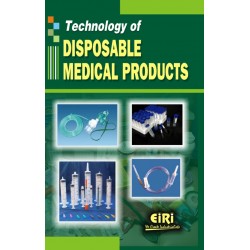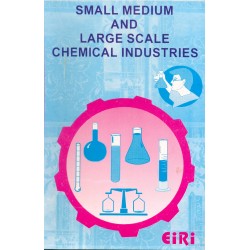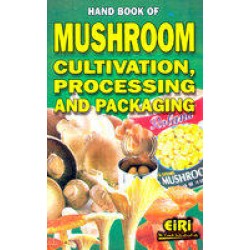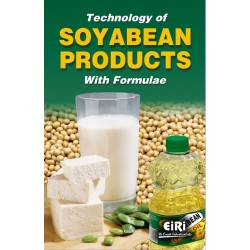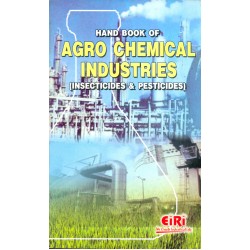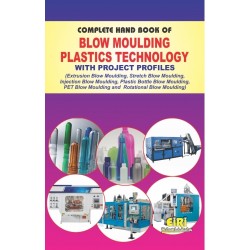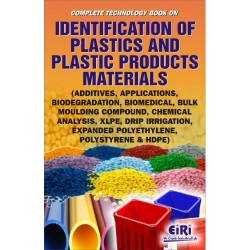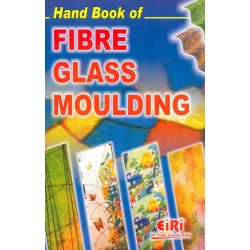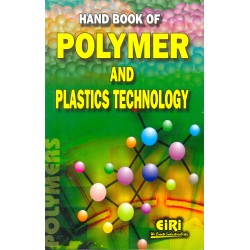Modern Technology of biodegradable Plastics and Polymers with Bio-Plastics, Starch Plastic, Cellulose Polymers and Others
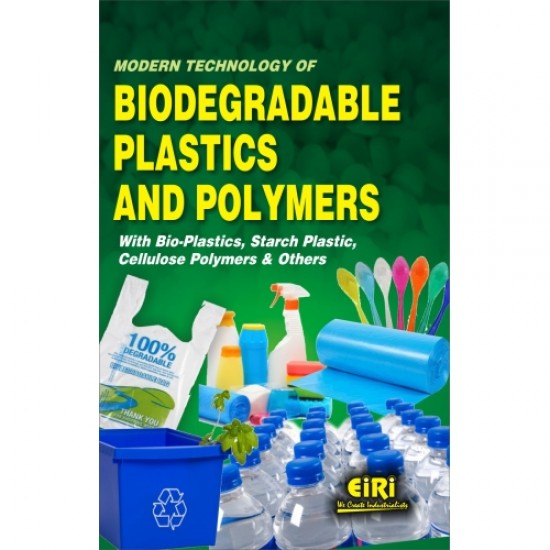
- More than 40 years of experience
- Managed by expert industrial consultants
- ISO 9001-2015 Certified
- Registered under MSME, UAM No: DL01E0012000
- 24/5 Research Support
Get your quesries resolved from an industry expert. Ask your queries before report or book purchase. - Custom Research Service
Speak to the our consultant to design an exclusive study to serve your research needs. - Quality Assurance
All reports are prepared by highly qualified consultants & verified by a panel of experts. - Information Security
Your personal & confidential information is safe & secure.
The book Modern Technology of biodegradable Plastics and Polymers with Bio-Plastics, Starch Plastic, Cellulose Polymers and Others covers Polymer Biodegradation, Biodegradation of Plastics, Biodegradable Polymers and Their Practical Utility, Practical Applications of Biodegradable Polymers, Starch Based Packaging Materials, Bio plastics as Green and Sustainable Alternative to Plastics, Disadvantages of Bio plastics Starch Plastics, Starch based Completely Biodegradable Polymers, Applications of Starch based Biodegradable Polymers in Food Industry, Synthesis of Bio degradable Plastic from Corn Starch, Biodegradation Nature of Thermoplastic Starch, Biodegradation of Thermoplastic Starch based Material, Biodegradable Moldable products and films comprising Blends of Starch Esters and Polyesters, Cellulosic Polymers , Production of Cellulose Plastics (including Fibres) Cellulose based Polymers with Excellent Meltprocessibility, Biodegradation of Lignin, Biodegradable Polymeric Films (Novel Lignin Starch and Ligning Gelatin), Lignin Graft Copolymer, Biodegradable Plastics and Composites from Wood, Process Design and Evaluation of Biobased Polyhydroxy alkanoates (PHA) Production, Transgenic Plants Producing Polyhydroxy alkanoates.
POLYMER BIODEGRADATION
- Biodegrdation
- Aerobic biodegradation
- Schema of polymer degradation under aerobic and anaerobic conditions
- Anaerobic biodegradation
- Xenobiotics Biodegradation
- Biodegradation of Aronaatic Compounds
- Aerobic benzen biodegradation
- Aerobic naphthalene biodegradation
- Aerobic toluene biodegradation side group attack
BIODEGRADATION OF PLASTICS
- PVA Biodegradation
- Degradation mechanism of polyvinyl alcohol
- Polyesters
- Poly(e-Caprolactone)
- Poly(L-Lactide)
- Aliphatic Polyalkylene Dicarboxylic Acids
- Polyethylene (PE)
- Nylon
- Biodegradation of Polymer Blends
- Starch/Polyethylene Blends
- Starch/Polyester Blends
- Starch/PVA Blends
- Biodegradable Polymers
- Mixtures of Synthetic Polymers and Substances that are Easy Digestible by Microorganisms
- Chemically Modified Starch
- Starch Polymer Composites
- Thermoplastic Starch
- Biodegradable Packing Materials
- The Synthetic Materials with Groups Susceptible to Hydrolytic Micrbial Attack
- Polycaprolactone
- The Biopolyesters
- Polyhydroxyalkanoates
- Poly-B-Hydroxyalkanoates
- Aliphatic Polyester Blends
- Poly(Hydroxyalkanoate)
- Blends of Poly(d.i) Lactide Family
- Conclusion
BIODEGRADABLE POLYMERS AND THEIR PRACTICAL UTILITY
- Polymers directly extracted/removed from natural materials (mainly plants)
- Polymers produced by classical chemical synthesis from renewable bio-derived monomers
- Polymers produced by microorganisms or genetically transformed bacteria
- Natural Polymers
- Amylose structure
- Structure of amylpectin
- Structure of bacterial polyester
- Polymers with Hydrolyzable Backbones
- Polyglycolic acid
- Polycaprolactone (PCL)
- Polyamies
- Natural protein
- Structure of polyglycolic acid (PGA)
- Polyurethanes
- Polymers with Carbon Backbones
PRACTICAL APPLICATIONS OF BIODEGRADABLE POLYMERS
- Medical Applications
- Surgical Sutures
- Dexon
- Polygalactin 910
- Mexon
- Monocryl
- Polydioxanone (PDS)
- Bone Fixation Devices
- Vascular Grafts
- Adhesion Prevention
- Artificial Skin
- Drug Delivery Systems
- Agricultural Applications
- Agricultural Mulches
- Controlled Release of Agricultural Chemicals
- Packaging
STARCH BASED PACKAGING MATERIALS
- Ingeo TM compostable bottles
- PLA Based Packaging Materials
- BioWare products
- NatureFlex film for vegetable wrapping
- Cellulose Based Packaging Materials
- Pullulan Based Packaging Mateials
- Other Bio-Packaging Solutions
- Partially Biodegradable Packaging Materials
- Profile Extrusion
BIO-PLASTICS AS GREEN AND SUSTAINABLE ALTERNATIVE TO PLASTICS
- Why Bioplastics
- Composition
- Classification
- Poly-iactic Acid
- Synthesis of PLA
- The flow chart of PLA
- Poly iactic acid (PLA) for Plastic Production
- Physical and Chemical Properties
- Some of the properties of PLA
- Unique Characteristics
- Some of the unique characteristics of PLA
- Special Case of Bioplastics
- Water Hyacinth
- Production of PHB
- Water hyacinth
- Advantages
- Bio-Degradation of Bio-Plastic
- Applications/Uses of Bioplastics
- Advantages of Bio-plastics
- Petro plastic Bottle (70% petro/30% plantbased (sugarcane) PET bottle
- Bio plastic Bottle-100% plant based (food waste)
DISADVANTAGES OF BIOPLASTICS
- Viability of Bio plastics
- Land required for renewable resources
- Renewable resources for food, feed and bioplastics
- Carbon Cycle of Bioplastics
- Bioplastic cycle
- End of life
- Cycle Time
- Bio-plastics vs oil based plastics
- Market and Price of Bioplastics
- Typical Bio plastic cycle
- Conclusions and Discussions
STARCH PLASTICS
- A section of the amylose molecule showing the repeating anhydroglucose unit
- A section of the amylopectin molecule showing the two different types of chain Linkages
- Starch polymers for nonplastic applications
- Overview of starch use for food and non-food purposes in Europe
- Starch plastics-Types and importance
- Starch plastic production technologies
- Production of starch plastics
- Partially fermented starch
- Native Starch
- Destructurised starch (Thermoplastic starch, TPS)
- Chemically modified starch
- Starch Blends
- Properties and uses of various chemical modified corn starch
- Common Non-bio based and biodegradable copolymers used in starch blends
- Biodegradability and biocontent of starch blends
- A scheme for synthesizing reactive starch blends
- Starch composites
- Conversion technologies
- Chemical and physical properties
- Mechanical and thermal properties
- Technical substitution potential
- Applications today and tomorrow
- Partially Fermented Starch Plastic
- Destructurized starch
- Chemically modified starch
- Technical substitution potential for starch plastics (the table below gives the views of the companies questioned)
- Starch Blends
- Main applications for starch blends share of interviewed company's total production by market sector
STARCH BASED COMPLETELY BIODEGRADABLE POLYMERS
- Structure and properties of starch
- Molecular structure of starch
- Preparation of starch based biodegradable polymers
- Physical blends
- Blend with synthetic degradable polymers
- Thermal and mechanical properties of thermoplastics starch/polylacide (TPS/PLA) blends
- Blend with biopolymers
- Chemical derivatives
APPLICATIONS OF STARCHBASED BIODEGRADABLE POLYMERS IN FOOD INDUSTRY
- In agriculture
- SEM photograph of strachs PVA/HA hydrogel (scale bar 3 um)
- In medical field
- Conclusions
SYNTHESIS OF BIO-DEGRADABLE PLASTIC FROM CORN STARCH
- Process Overview
- Properties
- Effciency
- Methods
- Hydrolysis of Corn Starch
- Bacterial Fermentation
- Purification of Lactic Acid
- Polymerization
- Results
- Discussion
BIODEGRADATION NATURE OF THERMOPLASTIC STARCH
- Fabrication of thermoplastic starch
- Properties of thermoplastic starch
- Morphology
- SEM micrographs of native wheat starch
- SEM of extruded wheat starch based thermoplastic film
- Conformation of inclusion model of a fatty acid in an amylose helix (Structure)
- Conformation of inclusion model of a fatty acid in an amylose helix (Structure of Vhtype)
- Maximum diffraction angle and average intermolecular distance observed from XRD
- Mechanical behavior
- Tensile properties of wheat flour based TPS having different glycerol content
- Thermal stability
- Glass transition temperature
- Dynamic mechanical analysis of wheat flour based TPS of glycerol
- Dynamic mechanical analysis of wheat flour based TPS of silicon dioxide
BIODEGRADATIN OF THERMOPLASTIC STARCH BASED MATERIALS
- Mineralization of a ground starch film in liquid and solid media
- Scheme of DIN/CEN test used to determine compostability of materials
- Mineralization in liquid and solid media
- Mineralization of co-extruded starch/PLA films in liquid (norm ASTM D-5209-92)
- vermiculture and compost (norm ASTM D-5338-92) media
- Mineralization of co extruded starch/PLA films in liquid (norm ISO/CEN 14852), vermiculture and compost (norm ISO/CEN 14855) media
BIODEGRADABLE MOLDABLE PRODUCTS AND FILMS COMPRISING BLENDS OF STARCH ESTERS AND POLYESTERS
- Bar graph showing water absorption determined by cobb Test Method for Polyethylene
- Graph of DSC of Films prepared from blends of acetate/propionate modified starch & body
- Graph showing DSC Thermal analysis of an entrnded blend of propionate modified starch
- Graph showing the composition of relative water absorption of unmodified starch, starch ester, and starch ester blend compositions
- Methods (Examples)
CELLULOSIC POLYMERS
- The structure of cellulose
- Major fields of application in which the individual product groups of cellulose ethers are used
- World fibre production 1920-2006
- Cellulosic polymers for non plastic applications
- Inorganic cellulose esters
- World fibre production 1920-2006 (kton)
- Cellulose ethers
- Cellulosic plastics (including fibres)-Types and importance
- Organic cellulose esters
- Regenerated cellulose
- Man made cellulose fibres
- Man made cellulose films
- Rigid cellulose acetate plastics
PRODUCTION OF CELLULOSE PLASTICS (INCLUDING FIBRES)
- Cellulose acetate
- (CH2COOC2H5) is made by reacting cellulose with acetic anhydride
- Regenerated Cellulosic Fibres
- The Viscose Process and Lyocell process
- Pulp
- The Viscose Process
- Lyocell process
- Recent R&D on regenerated cellulose
- Pulp
- Fibre designation according to ISO/TC 38
- Cellulose Acetate fibres
- Cellulose Hydrate and Cellulose Ester Films
- Properties
- Mechanical, thermal and water retention properties of selected staple fibres
- Mechanical, thermal and permeability properties of selected films
- Technical substitution potential
- Applications today and tomorrow
CELLULOSE BASED POLYMERS WITH EXCELLENT MELT PROCESSABILITY
- Thermoplasticity and mechanical properties of new cellulose based polymers
- Properties of cellulose Based Polymers Denatured With a Single Substituent
- Properties of Cellulose Based Polymers Denatured with Multiple Substituents
- Impact Resistance Factors of New Cellulose Based Polymers
- Molding with Test Molds
- Characteristics of the Development Material
- Conclusion
BIODEGRADATION OF LIGNIN
- Lignocellulose
- Lignin in biodegradation studies
- Global carbon cycle
- Microorganisms during composting
- Compost environment
- Commonly utilized methods for analyzing, isolating, and synthesizing lignin
- The composting process
- Temperature and pH variation during natural composting process
- Bacteria
- Fungi
- Biodegradation of lignin
- Lignin degrading fungi
- Lignin degrading organisms
- Lignin degrading Bacteria
- Studies in the compost environment
- Studies in which lignin degradation during composting or in soil incubation has not been reported
- Studies in which lignin degradation during composting or in soil has been reported
- Conclusions and comments
BIODEGRADABLE POLYMERIC FILMS (NOVEL LIGNIN STARCH AND LIGNIN GELATIN)
- Experimental
- Materials and methods
- Extraction of lignin from wood chips
- Preparation of Starch Lignin polymer
- Preparation of Gelatin Lignin films
- Preparation of Starch Gelatin Ligninfilms
- Mechanical Testing
- Water absorption Test
- Results and Discussions
- Lists the important properties obtained from the tensile test of various starch lignin films
- Lists the important properties obtained from the tensile test of various gelatin lignin films
- Tensile test of starch gelatin lignin films
- Water absorption test
- Percentage of swelling of 90-10% starchlignin films at various pH
- Percentage of swelling of 80-20% starch lignin films at varius pH
- Percentage of swelling of 90-10% gelatin lignin films at various pH
- Conclusions
LIGNIN GRAFT COPOLYMER
- Experiment
- Isolation and Purification of Soda Lignin
- Graft Copolymerisation
- Fourier Transform Infrared (FTIR)Analysis
- Differential Scanning Calorimety (DSC) Analysis
- Mud Property Test
- Results and Discussion
- FTIR Spectrs
- DSC Thermogram
- Infrared spectra of soda lignin, itaconic acid and LGC.
- Thermogram of soda lignin
- Mud Properties
- Base mud rheological properties at different concentrations of LGC
- Base mud rheological properties before and after the thermal aging test (before and after rolling at 190 Degree for 16 h)
- Base mud rheological properties before and after the thermal aging test (before and after rolling at 190 Degree for 16 h)
- Conclusion
BIODEGRADABLE PLASTICS AND COMPOSITES FROM WOOD
- Structure 1
- The Drawings
- Chemical structure of the ester or thisester
- Lignin-Containing material of a vasular plant
- Element & Bonding pattern of Lignin
- Bar graphs of weight loss for each consultant of a blend of grafted & lignin containing material
- Description
- Lignins and Woods Grafted with this Chemistry
- Hydroperoxides Useful in Polymerization of Lignin containing materials
- Some Halides Useful in Polymerization of Lignin containing Materials
- Use of Different Salts with Hydrogen Peroxide to Initiate the Grafting Reaction
- Poly (Lignin-G(1-Amidoethylene) Formed From Various Lignins and with Different Coinitiators
- Synthesis of Polylignin
- Synthesis Data and Physical Chracteristics of Graft Terpolymer
- Synthesis of Poly(lignin-g-(2-propenamide-copolyol) a (Five or Ten oxyethylene units er properoic repeat unit)
- Copolymerization Reactions of Lignin and phenylethylene
- Copolymerization Reactions of Lignin and 1-Phenylethylene
PROCESS DESIGN AND EVALUATION OF BIOBASED POLYHYDROXYALKANOATES (PHA) PRODUCTION
- Process Design and Assessment
- Process Index (SPI) methodology
- Process Intensification (PI)
- Sustainable Process Index (SPI)
- Slaughtering Waste Utilization for Biobased Polyester Production
- Rendering
- Process flowchart
- Hydrolysis
- Biodiesel
- PHA Production
- Biogas
- Conclusions
TRANSGENIC PLANTS PRODUCING POLYHYDROXYALKANOATES
- Polyhydroxyalkanoates (PHAs)
- Polyhydroxybutyrate (PHB) and Polyhydroxy-co-valerate (PHBV)
- Biosynthesis of Polyhydroxybutyrate (PHB) and Polyhydroxy co-valerate (PHBV)
- Commercialization of PHBV by Bacterial Fermentation
- Production of Polyhydroxyalkanoates (PHAS) in Plants
- Arabidopsis thaliana
- Tobacco (Nicotiana tabacum)
- Rapeed (Brassica napus)
- Cotton (Gossypium hirsutum)
- Alfalfa (Medicago sativa)
- Flax(Linium usitatissimum)
- Oil palms (Elaeis guineensis and E.oleifera)
- Construction of PHB and PHBV transformation vectors
- Transformation of PHB and PHBV transformation vectors into oil palm
- Conclusions and future prospects
How to Make Project Report?
Detailed Project Report (DPR) includes Present Market Position and Expected Future Demand, Technology, Manufacturing Process, Investment Opportunity, Plant Economics and Project Financials. comprehensive analysis from industry covering detailed reporting and evaluates the position of the industry by providing insights to the SWOT analysis of the industry.
Each report include Plant Capacity, requirement of Land & Building, Plant & Machinery, Flow Sheet Diagram, Raw Materials detail with suppliers list, Total Capital Investment along with detailed calculation on Rate of Return, Break-Even Analysis and Profitability Analysis. The report also provides a birds eye view of the global industry with details on projected market size and then progresses to evaluate the industry in detail.
We can prepare detailed project report on any industry as per your requirement.
We can also modify the project capacity and project cost as per your requirement. If you are planning to start a business, contact us today.
Detailed Project Report (DPR) gives you access to decisive data such as:
- Market growth drivers
- Factors limiting market growth
- Current market trends
- Market structure
- Key highlights
Overview of key market forces propelling and restraining market growth:
- Up-to-date analyses of market trends and technological improvements
- Pin-point analyses of market competition dynamics to offer you a competitive edge major competitors
- An array of graphics, BEP analysis of major industry segments
- Detailed analyses of industry trends
- A well-defined technological growth with an impact-analysis
- A clear understanding of the competitive landscape and key product segments
Need Customized Project Report?
- Ask for FREE project related details with our consultant/industry expert.
- Share your specific research requirements for customized project report.
- Request for due diligence and consumer centric studies.
- Still haven't found what you're looking for? Speak to our Custom Research Team
About Engineers India Research Institute:
Note: We can also prepare project report on any subject based on your requirement and country. If you need, we can modify the project capacity and project cost based on your requirement.
Our Clients

Our Approach
- Our research reports comprehensively cover Indian markets (can be modified as per your country), present investigation, standpoint and gauge for a time of five years*.
- The market conjectures are produced on the premise of optional research and are cross-accepted through associations with the business players
- We use dependable wellsprings of data and databases. What's more, data from such sources is handled by us and incorporated into the report
Why buy EIRI reports?
- Our project reports include detailed analysis that help to get industry Present Market Position and Expected Future Demand.
- Offer real analysis driving variables for the business and most recent business sector patterns in the business
- This report comprehends the present status of the business by clarifying a complete SWOT examination and investigation of the interest supply circumstance
- Report gives investigation and top to bottom money related correlation of real players/competitors
- The report gives gauges of key parameters which foresees the business execution





















